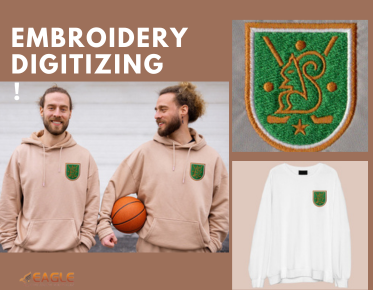Essential Tips for Beginners in Vector Engineering
Welcome to the fascinating world of vector engineering, where precision meets creativity. Whether you're a budding artist or a seasoned designer, vector engineering offers endless possibilities to bring your digital visions to life. Let’s embark on this journey together, exploring the essential tools, techniques, and tips that will transform you into a vector maestro. For the best vector art conversion service, please feel free to contact us.
What is Vector Engineering?
A Beginner’s Guide to Vector Engineering
Vector engineering is the craft of creating digital artwork using vector graphics. Unlike raster graphics, which are made up of pixels, vector graphics use mathematical equations to create shapes and lines. Vector graphics use mathematical equations to form shapes and lines, as opposed to raster graphics, which are composed of pixels.
This means your designs can be scaled infinitely without losing quality, making them perfect for everything from tiny icons to massive billboards.
The Evolution of Vector Art
Vector art has come a long way since its inception. Initially used in early computer graphics, it has evolved into a crucial element of modern design. From the intricate line art of the 1960s to today's complex digital illustrations, vector art continues to push the boundaries of what's possible in visual creativity.
Why Vector Engineering is Essential in Modern Design
In today's digital age, vector engineering is indispensable. It's the backbone of graphic design, web design, animation, and branding. Vectors provide the flexibility and scalability needed for responsive design, ensuring your artwork looks stunning on any device or medium.
Getting Started with Vector Software
Choosing the Right Vector Software
Selecting the right software is your first step in vector engineering. Popular choices include Adobe Illustrator, known for its comprehensive features and industry standard status; CorelDRAW, favored for its intuitive interface; and Inkscape, a robust, free alternative perfect for beginners.
Overview of Popular Tools: Adobe Illustrator, CorelDRAW, Inkscape
Adobe Illustrator offers extensive tools and integration with other Adobe products, making it ideal for professional designers. CorelDRAW provides powerful features with an easier learning curve. Inkscape, an open-source gem, offers all the essentials without the price tag, making it perfect for those just starting out.
Basic Interface and Tools You Need to Know
Regardless of your chosen software, familiarize yourself with the basic interface and tools. Key tools include the Pen tool for creating paths, Shape tools for geometric designs, and the Layers panel for organizing your work. Understanding these basics sets a solid foundation for your vector design journey.
Essential Tools and Features
The Pen Tool: Your Best Friend in Vector Design
The Pen tool is the cornerstone of vector design. It allows you to draw precise paths by placing anchor points and adjusting their handles. Mastering the Pen tool gives you the power to create anything from simple shapes to intricate illustrations.
Mastering Shapes and Paths
Shapes and paths form the building blocks of vector art. Learn to manipulate basic shapes like rectangles, circles, and polygons to construct more complex designs. Combine and edit paths to refine your artwork and achieve the desired effect.
Working with Layers and Groups
Organizing your design elements into layers and groups streamlines your workflow. Layers help manage different components of your design while grouping objects allows for easier manipulation and editing. This organization is crucial for creating intricate, multi-element projects.
Vector Illustration Tips and Tricks
How to Create Detailed Illustrations
Detailed illustrations require patience and precision. Break down your design into smaller sections, focusing on one part at a time. Use layers and groups to keep your work organized and manageable.
Techniques for Simplifying Complex Designs
Simplicity often enhances clarity. Use geometric shapes and clean lines to simplify complex designs. Focus on essential elements and eliminate unnecessary details to create more impactful artwork.
Adding Texture and Detail
Textures and details bring your vector art to life. Use pattern fills, gradients, and brush strokes to add texture. Incorporate fine details to enhance realism and depth, but be mindful of not overloading your design.
Vector Art for Web and Print
Preparing Your Vectors for the Web
For web use, optimize your vectors for fast loading and compatibility. Export your files in web-friendly formats like SVG, and ensure they are responsive and scalable for different devices.
Ensuring Print-Ready Vector Files
Print-ready vectors require high-resolution and accurate color profiles. Export your files in formats like PDF or EPS, ensuring all text is outlined and colors are set to CMYK for best print results.
Understanding Resolution and Quality
Resolution affects the quality of your vector art in both web and print. Vectors are resolution-independent, but ensure your export settings match the intended use. High resolution is crucial for print, while web graphics require optimized file sizes for quick loading.
Working with Vector Templates
Benefits of Using Templates
Templates provide a starting point, saving time and ensuring consistency. They offer predefined structures and elements that can be customized to fit your project’s needs, making the design process more efficient.
Customizing Templates to Fit Your Style
Modify templates to reflect your unique style. Change colors, shapes, and typography to align with your vision. Personalizing templates ensures your final design is original and tailored to your specific requirements.
Finding and Choosing the Best Templates
Select templates from reputable sources. Look for high-quality, well-organized files that are easy to customize. Platforms like Adobe Stock, Envato Elements, and free resources like Freepik offer a wide range of options.
Exporting and Saving Your Vector Files
Best Practices for Exporting Files
Export your vector files with care. Choose the appropriate format based on the intended use, and check export settings for quality and compatibility. Always save a master file for future edits.
Understanding Different File Formats: AI, EPS, SVG, PDF
Different formats serve different purposes. AI and EPS are ideal for professional design work and print. SVG is perfect for web use due to its scalability. PDF is versatile, suitable for both web and print, preserving the design integrity.
Keeping Your Files Organized
Maintain an organized file structure. Use descriptive names and folders to keep your projects sorted. Regularly back up your files to prevent data loss and ensure easy access to your designs.
Collaborating on Vector Projects
Tips for Teamwork in Vector Engineering
Effective teamwork requires clear communication and organization. Share your vector files in a centralized location, use version control, and maintain consistency in design standards. Regular feedback and collaboration ensure a cohesive final product.
Sharing and Syncing Files with Team Members
Utilize cloud storage and collaboration tools like Adobe Creative Cloud, Dropbox, or Google Drive to share and sync files. These platforms facilitate real-time collaboration and ensure everyone has access to the latest version.
Effective Communication in Collaborative Design
Clear and concise communication is key. Use project management tools like Trello or Asana to track progress, assign tasks, and provide feedback. Regular meetings and updates keep the team aligned and on track.
Exploring Different Styles in Vector Art
Minimalist Vector Design
Minimalist design focuses on simplicity and clarity. Use clean lines, ample whitespace, and a limited color palette to create elegant and modern vector art that communicates effectively.
Retro and Vintage Vector Art
Retro and vintage styles evoke nostalgia. Incorporate elements like distressed textures, muted colors, and classic typography to create designs that transport viewers to a different era.
Abstract and Geometric Styles
Abstract and geometric vector art uses shapes and patterns to create visually intriguing designs. Experiment with bold colors, complex patterns, and unique compositions to push the boundaries of conventional design.
Troubleshooting Common Issues
Fixing Broken Paths and Shapes
Broken paths and shapes can disrupt your design. Use the software’s tools to join or close paths, ensuring a seamless and professional look. Regularly check for and fix any inconsistencies.
Resolving Color and Gradient Problems
Color and gradient issues can affect the visual appeal of your design. Ensure your color settings are correct, and use the gradient tool to adjust and blend colors smoothly. Test your designs on different screens and print samples to verify accuracy.
Debugging Export and Compatibility Issues
Export issues can arise due to format or software compatibility. Check export settings, use standard file formats, and test your files in different environments to ensure they work as intended.
Resources for Continued Learning
Online Tutorials and Courses
Expand your skills with online tutorials and courses. Platforms like Udemy, Skillshare, and YouTube offer extensive resources for learning vector engineering at your own pace.
Books and Guides for Vector Engineering
Books provide in-depth knowledge and inspiration. Explore titles like "Vector Basic Training" by Von Glitschka and "Adobe Illustrator Classroom in a Book" for comprehensive learning.
Joining Vector Art Communities
Join online communities to connect with other vector artists. Platforms like Behance, Dribbble, and Reddit offer opportunities for feedback, collaboration, and inspiration.
Inspiration and Creative Block Remedies
Finding Inspiration for Your Vector Projects
Inspiration can be found everywhere. Explore art galleries, nature, and online portfolios. Keep a sketchbook to jot down ideas and revisit them when you need a creative spark.
Overcoming Creative Blocks
Creative blocks are natural. Take breaks, change your environment, and try new techniques. Collaborate with other artists to gain fresh perspectives and reignite your creativity.
Staying Motivated and Inspired
Stay motivated by setting goals and celebrating your achievements. Follow influential vector artists, participate in design challenges, and continuously seek out new learning opportunities.
Vector engineering is a journey of continuous learning and creativity. Embrace the challenges, celebrate your progress, and keep exploring new techniques. With dedication and passion, you’ll master the art of vector design, creating stunning visuals that captivate and inspire.


